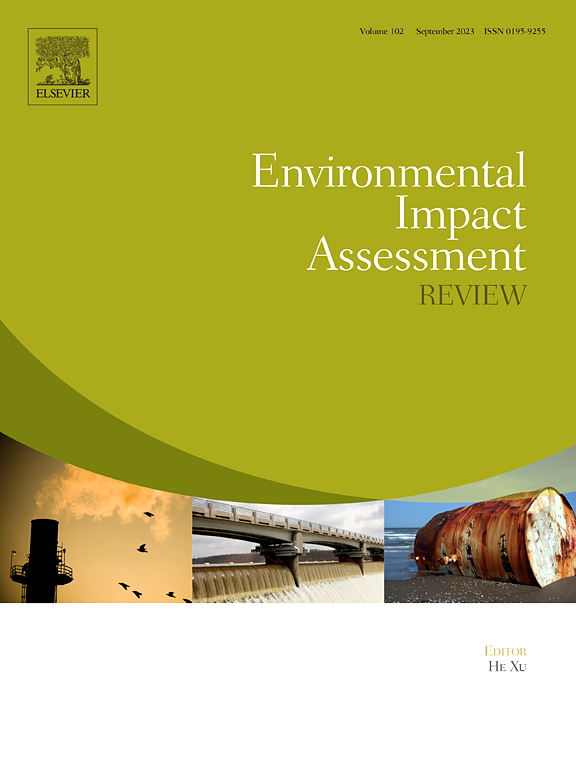Systematic review of life cycle assessment of thermoelectric materials and devices to identify knowledge gaps and sustainability perspectives
IF 9.8
1区 社会学
Q1 ENVIRONMENTAL STUDIES
引用次数: 0
Abstract
This research examines the sustainability of thermoelectric (TE) materials and devices through a systematic review of 15 life cycle assessment (LCA) studies. The review was designed to focus on the significant question, not addressed in the literature, of whether published LCAs of thermoelectric materials and devices collectively enable conclusions to be drawn at the sector scale. The analysis focused on gaps and inconsistencies in the methodologies employed, including a lack of adherence to ISO standards, varying definitions of functional units, and incomplete reporting of environmental impacts. Most studies concentrate on traditional TE materials, such as bismuth telluride, with little emphasis on alternative or emerging materials. The majority of the assessments are based on process-oriented attributional LCAs, while consequential LCAs and cradle-to-cradle approaches are notably underutilized. Key findings suggest that, although TE technologies have the potential to offer environmental advantages—like energy recovery from waste heat and efficient cooling—there are considerable challenges that must be addressed. These include high production costs, dependence on toxic materials, and scalability concerns. The findings of the review illuminate the pathway for future research. It is recommended to focus on the development of sustainable and abundant materials, ensure compliance with standardized LCA methodologies, and incorporate cradle-to-end-of-use assessments to enhance transparency and comparability. There should also be an increased emphasis on case-specific analyses and the use of advanced computational models to better inform decisions regarding environmental sustainability and scalability. While TE technologies are promising, the inconsistencies and gaps in current studies limit a thorough understanding of their environmental impacts and broader acceptance. This review highlights the critical need for consistent methodologies, greater exploration of diverse materials, and geographic inclusivity to build a solid foundation for assessing the sustainability of TE materials and devices.
系统回顾热电材料和器件的生命周期评估,以确定知识差距和可持续性观点
本研究通过对15项生命周期评估(LCA)研究的系统回顾,考察了热电(TE)材料和器件的可持续性。该综述旨在关注文献中未解决的重要问题,即已发表的热电材料和器件的lca是否能够在部门规模上得出结论。分析的重点是所采用方法的差距和不一致,包括缺乏对ISO标准的遵守,功能单位的定义不同,以及对环境影响的报告不完整。大多数研究集中在传统的TE材料,如碲化铋,很少强调替代材料或新兴材料。大多数评估基于面向过程的归因lca,而结果性lca和从摇篮到摇篮的方法明显未得到充分利用。主要研究结果表明,尽管TE技术具有提供环境优势的潜力,比如从废热中回收能源和高效冷却,但仍有相当大的挑战需要解决。这些问题包括高生产成本、对有毒材料的依赖以及可扩展性问题。本文的研究结果为今后的研究指明了方向。建议将重点放在可持续和丰富材料的开发上,确保遵守标准化的生命周期分析方法,并纳入从摇篮到最终使用的评估,以提高透明度和可比性。还应更加强调具体案例分析和使用先进的计算模型,以便更好地为有关环境可持续性和可伸缩性的决策提供信息。虽然TE技术很有前途,但目前研究中的不一致和差距限制了对其环境影响的彻底理解和更广泛的接受。这篇综述强调了对一致的方法、对不同材料的更大探索和地理包容性的迫切需要,以为评估TE材料和器件的可持续性奠定坚实的基础。
本文章由计算机程序翻译,如有差异,请以英文原文为准。
求助全文
约1分钟内获得全文
求助全文
来源期刊

Environmental Impact Assessment Review
ENVIRONMENTAL STUDIES-
CiteScore
12.60
自引率
10.10%
发文量
200
审稿时长
33 days
期刊介绍:
Environmental Impact Assessment Review is an interdisciplinary journal that serves a global audience of practitioners, policymakers, and academics involved in assessing the environmental impact of policies, projects, processes, and products. The journal focuses on innovative theory and practice in environmental impact assessment (EIA). Papers are expected to present innovative ideas, be topical, and coherent. The journal emphasizes concepts, methods, techniques, approaches, and systems related to EIA theory and practice.
 求助内容:
求助内容: 应助结果提醒方式:
应助结果提醒方式:


